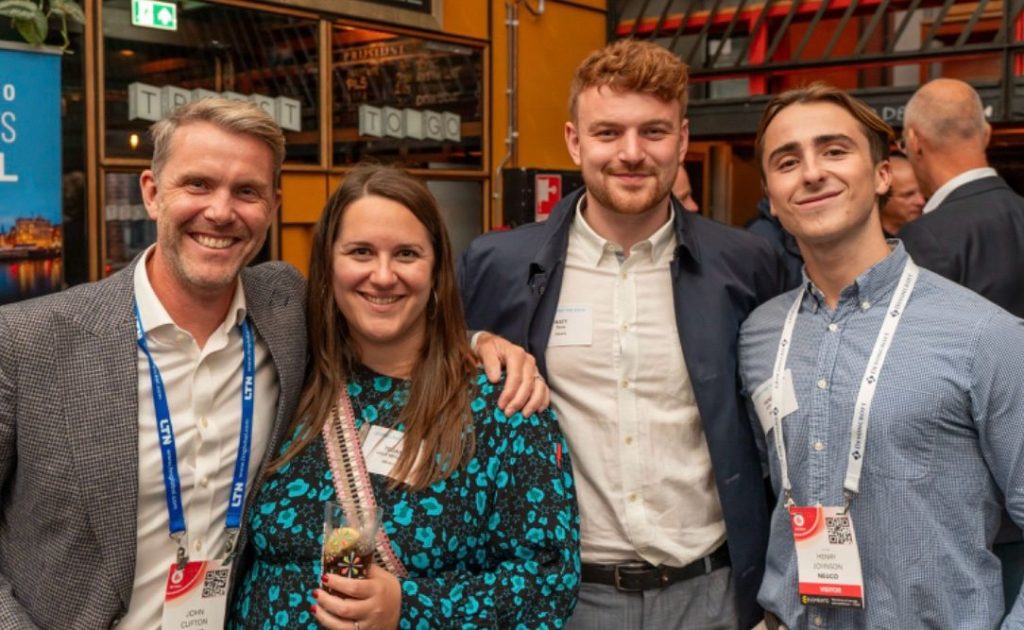After our annual trip to NAB in Las Vegas, we’re back with full notebooks, sore feet, and plenty of thoughts about where the industry’s headed.
First off, the general vibe this year? Really positive. Compared to last year, there was a noticeable lift in energy. Almost everyone we met seemed genuinely pleased with the volume—and more importantly, the quality—of their customer meetings. Always a good sign, though of course the real test is what happens in the weeks and months after the show.
That said, visitor numbers were definitely lighter—Sunday in particular felt pretty quiet. Still, there was a decent geographic spread. We saw strong representation from EMEA and APAC, but overall, it felt like a more North American-focused event than in previous years. Perhaps a reflection of tighter travel budgets or evolving post-pandemic strategies, and likely a trend that will continue.
A recurring topic of conversation was tariffs—and how they might impact the broadcast and media tech space. Views varied wildly. Some were unfazed—“we’re a software business, we’ll be fine”—while others were genuinely concerned. Our view? The direct impact may be minimal for most, but it’s the hit to confidence and decision-making that could have the biggest effect. When investment slows, the whole industry feels it.
Encouragingly, there was still a lot of talk about growth. Despite the macroeconomic backdrop, companies are revising strategies, exploring new markets, and broadening their video capabilities. That’s not just good news—it’s essential for keeping momentum going. A clear direction of travel for many is moving into new areas of video beyond the traditional broadcasters, operators, and content owners. The Enterprise space came up repeatedly, and we fully expect more companies to expand their reach into that world.
Naturally, consolidation was a topic too. The vendor landscape continues to shift, and while that’s nothing new, it always brings both opportunity and uncertainty. In times like this, agility is key—for businesses and individuals alike.
And of course, there are the people. Everyone says it, but this industry really is full of brilliant individuals. Our meetings were full of insight, energy, and laughs. It’s one of the things we love most about what we do—because behind every innovation, every partnership, every deal, there’s a great team making it happen.
So, what does all this mean for hiring?
In times of change, growth, or uncertainty (and let’s face it, that’s most of the time!), having the right people in place is more important than ever. Whether you’re breaking into new markets, adapting product strategy, or preparing for shifts in customer behaviour, success hinges on your team.
Two of the biggest hiring trends we’re seeing right now:
1. People from outside the industry making an impact – Sometimes a fresh approach is exactly what’s needed. Just look at the CEO panel at the Devoncroft Summit (held the day before the show opened), where 3 of the 4 panellists—Avid, Vizrt, and Dalet—had recently hired CEOs from outside the broadcast world.
2. Enterprise experience unlocking new markets – As vendors look beyond their traditional customer base, the Enterprise space is full of opportunity. But it’s a different beast. The buyer behaviour, expectations, and sales cycles can be completely different—so bringing in people who understand that world will be key to success.
The good news? We’re here to help. Whether you’re growing your team, reviewing your hiring strategy post-NAB, or just want to chat about how the market’s evolving, let’s talk.
We’re already looking forward to next year, but for now, it’s back to doing what we do best: helping amazing companies connect with amazing people.



















